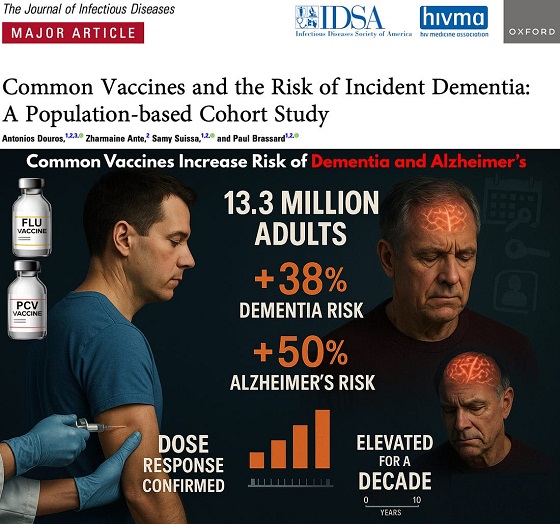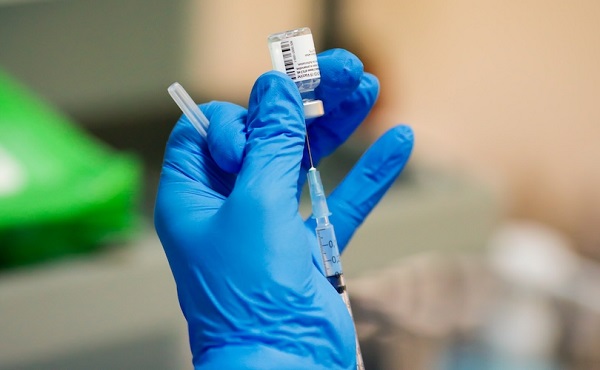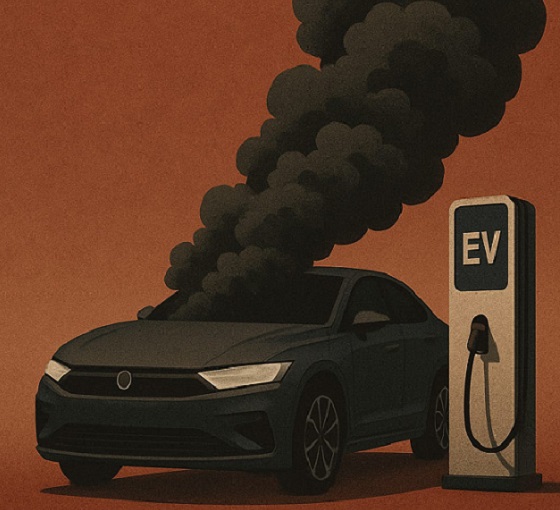Business
My European Favourites – Emilia-Romagna, Italy


My European Favourites – Emilia-Romagna, Italy
When people think of Italy, the first places that usually come to mind are Rome, Venice, Milan and the region of Tuscany, which includes Florence and Pisa. I would go to any of these places in a heartbeat. I love them all, but a region that many tourists overlook is Emilia-Romagna. The region’s name might not be well known, but its exceptional agricultural, automotive and mechanical sectors are known the world over.
Much of the gastronomy we associate with Italian cuisine has its roots in Emilia-Romagna. The region is famous for Parmigiano Reggiano (Parmesan cheese), Modena balsamic vinegar, Parma ham (prosciutto), and various types of pasta, just to name a few items. If you are a wine lover, Sangiovese and Lambrusco are two of their well-known “vinos” for their unique taste and quality.
If you are a motor sport buff, Ducati motorcycles and luxury car manufacturers Lamborghini, Maserati and Ferrari all have their roots in the area. With this racing heritage, it’s only natural that two major circuits are located in the region. The motorcycle racing Misano World Circuit Marco Simoncelli is located near Misano Adriatico and is named after a local rider who died during a race in Malaysia in 2011. The Autodromo Enzo e Dino Ferrari located in Imola, which has been used for Formula 1 Grand Prix races, is named after Ferrari’s founder and his son. The track is sadly the location where three time World Champion Ayrton Senna of Brazil died in 1994.
It is best to do these tours with Parma as your base in Emilia-Romagna, but I enjoy its capital and largest city, Bologna. The city is Italy’s seventh largest with about 400,000 people, and it is famous for its medieval towers, churches, colonnades and historical city centre. The University of Bologna, which was established in 1088 AD, is the oldest university in the Western world. I love exploring the narrow city centre streets and browsing the food markets and shops with fresh produce, cured meats, fish, breads, pastas and regional products. I’m no chef, but I imagine that it would be sensory overload for any culinary expert. The small restaurants with street front patios make some of the best dishes you will eat in all of Italy. You have to go there.

Bologna’s medieval towers, a colonnade, a street full of restaurants and the Neptune Fountain.
Parmigiano Reggiano
We depart in the morning from our hotel in central Bologna to a family cheese making operation that produces the “king of cheeses,” Parmigiano Reggiano. The just over an hour drive brings us to a farm and factory near the town of Parma. They are members of the consortium that designates and controls authentic Parmigiano Reggiano production. Under law, the designation Parmigiano Reggiano is protected as a PDO (Protected Designations of Origin) and can be used only by certified producers from this area, so consumers know they have the real deal.
Around 1000 AD, monks reclaimed the marshy lands in the Po valley. The fertile land was plowed and worked by the monks using cows. With numerous cows, the monks had to invent a method to preserve the large quantities of high-quality milk they produced into a product that could be stored and used over time. The monks eventually developed a technique to produce a distinctive cheese in large boilers. The large round Parmigiano Reggiano is still made the same way today.
The Minardi family own and operate the Borgo del Gazzano farm factory that we are visiting. As an organic farm, they pay close attention to the entire local supply chain process to ensure the highest quality of ingredients. We arrive as they are reaching their final steps of the boiler process that was perfected by the monks long ago. Two men collect the curd from the boiler using muslin cloth and place it in large round molds. The cheese is left to set for a day or two then the mold will be removed to add a plastic wrap that has the imprint of the famous Parmigiano Reggiano stamp along with the date and the producer’s number. The mold is then reattached over the plastic wrap and tightened. The imprint from the wrap will solidify as a permanent mark on the rind over the next day. The wrap and mold are then removed and the cheese is placed in a rectangular vessel filled with a brine mixture for 20-25 days so that the cheese can absorb salt.

Production boilers, collecting the curd, the cheese freshly set in a mold and the brine bath.
Finally, the cheese is placed on a shelf in the warehouse to age for 12 months. Prepare to be astounded to see row after row of these shelves that are over 20 cheeses high and at least 80 cheeses long per side. It feels like a library made of cheese! Do you hear a mechanical sound coming from the next aisle? It is a machine working its way up, down and across the shelves. Its job is to grab one heavy cheese off the shelf at a time, spin it around so it can brush off the excess bits, flip the cheese, then place it safely back on the shelf, before automatically moving on to the next one. I guess now we know where they get the parmesan cheese shavings for the cheese shakers we buy at our local grocery store.
We will step outside to the barn area to see the cows and dairy operation before moving to the tasting area and shop. Tasting the celebrated “fromaggio,” with its distinctive texture and sharp flavour, at the very place where it is produced is really something special. This is not to be mistaken with the cheese we often get at home, as outside of Europe, companies can only use the word “Parmesan” to describe their cheese. To get the real deal, you have to make sure that it is clearly sold as, or even better, see it stamped as Parmigiano Reggiano.

Parmigiano shelves, the stamp on the rind, the cleaning machine and me with Alfonso Minardi.
Parma Ham (Prosciutto)
Just 30 minutes from the Borgo del Gazzano is a producer that makes another iconic food. The Lanfranchi family are specialists in the making of a cured meat known the world over as Raw Parma Ham (Prosciutto Crudo di Parma). For 20 years, they have been selecting the finest raw materials and using their traditional methods and expertise to produce the finest and tastiest prosciutto, salamis, pancetta, culatello and coppa di parma. Like the Parmigiano Reggiano cheese producers, the Parma Ham producers are also part of a consortium, and as such, must adhere to high standards and follow precise rules of production.
We will get an introduction of the prosciutto making process. Our tour starts with the trimming of the excess fat and rind of the pork thigh to give the ham its rounded shape and to assist in the salting process. The rind is treated with wet salt while the lean parts are sprinkled with dry salt. During a three week period, the ham is salted twice and placed in walk-in freezers with different temperatures. During this period, it slowly absorbs salt, loses moisture, and loses about 4% of its weight.

Our guide explaining the production process, the ham cellar and the “5 point crown” stamp.
In the next stage, the ham’s residual salt is removed and it is placed in a special room with controlled humidity and temperature for just over two months. While in this room, the salt penetrates even deeper and it is reduced by another 8-10%. We continue into a room with windows that are opened for the ham to dry over the next few months in natural process that will result in another weight loss of 8-10%.
The ham’s final move is to the cellar on the seventh month. In the cellar, important biochemical and enzymatic processes occur. Here it loses another 5% of weight but gains the distinct aroma and taste of the Param Ham.

The finished La Perla Prosciutto, a mixed plate of their products and me with Mr. Lafranchi.
At the end of the curing process, the ham is penetrated by a horse bone needle by experts who can verify its quality with a trained sense of smell. Finally, after a twelve month journey, the ham is inspected by the Parma Quality Institute and branded with the “5 pointed crown” as a guarantee to the consumer that the product is of the highest quality.
The tour gives us a great appreciation for the care that goes into making these products, and underscores why they are highly sought after. We move to the La Perla tasting room where we can try some of the local wines while enjoying lunch, which of course, includes pasta, cured meats, prosciutto, Parmesan cheese, bread and a dessert. It is always tough to get a group to leave because the Lafranchi family are great hosts who love to meet people from around the world. But we must leave, as one hour away, is a mecca for car enthusiasts.

The red arch at the Ferrari Museum entrance, the Ferrari 330 P3 and the AF Corse # 51.
Ferrari Museum
As we arrive at Maranello, we are greeted by a traffic circle that has a familiar silver prancing horse in the middle. This is undeniably, the home of Ferrari. Founded by Enzo Ferrari in 1929 as Scuderia Ferrari, the company sponsored drivers and manufactured race cars before moving into production of street-legal vehicles as Ferrari S.p.A. in 1947.
As we arrive to the Museum, we see a F1 race car in what looks like scaffolding and a welcoming bright red arch. Ferrari is the most successful Formula 1 team in history and has millions of loyal and exuberant fans worldwide. The motorsports cars in the museum are dedicated to the 90 years of Ferrari racing heritage. The cars will take your breath away.

The “Prancing Horse” logo, a 1950’s vintage race car and a classic Ferrari.
My favourite area of the museum is the Michael Schumacher exhibition dedicated to his 11 years of racing with Ferrari. The room has some of his F1 race cars on display in an awe-inspiring semi-circle with a video wall in the background playing highlights of his career. On the other side of the room is a lower wall dedicated to Ferarri champion drivers and an upper wall full of shiny trophies.

A few F1 cars from the Michael Schumacher exhibition, Ferrari champions and the trophies.
In addition to the racing automobiles, the museum also displays its most famous street cars through history, including the iconic Ferrari Testarossa. The Ferrari shop is full of items with the iconic item emblazoned on them, but like the high performance cars, they are pricey.

A Ferrari Portofino, a LaFerrari Aperta, and the Ferrari 5999 HY-KERS test “MULOTIPO.”
With your adrenalin pumping from being surrounded by automotive power, you will be ready to try a couple of unique experiences. If you are mechanically inclined, you will love the Pit Stop Experience, where they time you as you make a front tire change on a Formula 1 car. Those that “feel the need for speed” will drool at the sight of the unbelievable Scuderia Ferrari F1 simulators. After you climb into the pilot’s cockpit, you are given a brief explanation of how to use the paddles behind the steering wheel and the gear box. They can set up the simulator for regular driver or in a more advanced mode for “professionals.” You even get to choose one of the famous F1 tracks for your race experience. The simulator lets you feel the track surface including rubbing strips feel the breaking and throttle forces.
If you are interested, you can combine the museum ticket with a tour of the Ferrari track and factory. For the duration of the tour, you must remain on the company’s shuttle buses and no photos or video are allowed. The factory entrance has been kept the same as it was in 1947 and the track is where all of Ferrari’s competition and road cars have been tested since 1972.
Those that want to get behind the wheel can go to the nearby Autodromo di Modena race circuit and drive a Ferrari for 15 minutes or longer. The experience includes track information and safety protocols from a professional driver.

The tire changing Ferrari Pit Stop Experience and the Formula 1 racing simulators.
Balsamic Vinegar
After the heart racing Ferrari experience, we make a short early evening drive to a Balsamic Vinegar producer or “Acetaia” that was founded in the 1800s. The Paltrinieri Acetaia, established in 1845, maintains the family tradition and replenishes over 1000 barrels of balsamic using the experience handed down generation after generation. Adhering to the strict regulations and using local ingredients from the Trebiano and Lambrusco vineyards, Guido Paltrinieri guides the production of the vinegar must.
The company harvests 160,000 kilograms of grapes on their 25 acre farm, which produces 15,000 litres of balsamic vinegar. We will visit the warehouse attic to see the medium sized barrels made from durmast, chestnut, mulberry, cherry, acacia, ash and precious juniper wood.
The flavour garnered from the barrels, along with the aging process, result in the unique scent and flavour of the balsamic. In the tasting room, we try a range of balsamic they produce, and it is amazing how varied the taste can be in terms of the sweet and sour tones. They also vary in density. The denser the vinegar, the more of a syrupy texture it has. Mind you, this is not the balsamic you find at your local grocery store. A high quality Modena balsamic in a 100 ml bottle, and aged up to 25 years, can cost hundreds of dollars. The company also produces balsamic based products like Balsamotto, Acet-Up, Dulcia and Saba which are great for use in cooking or as a condiment, including on ice cream!

The Acetaia’s barrel sign, processing equipment, barrels of balsamic and the tasting room.
One of my favourite meals in Italy is at the Acetaia Paltrinieri restaurant. After our balsamic tasting and tour, we head across the courtyard to the rustic farm house restaurant. Just before we arrive to the restaurant doors, we are greeted with a glass of Pignoletto sparkling wine and crumbled Parmigiano Reggiano drizzled with DOP Modena Balsamic Vinegar. The balsamic and the cheese go so well together.

The Acetaia’s courtyard, restaurant entrance, Parmigiano with balsamic and their products.
Once inside, we are greeted with bottles of Lambrusco wine on the table, which everyone is quick to spot and partake in. Soon, a plate of a local flatbread called “tigelle” similar to an English muffin, and served warm, arrives with a spread. They are so good!
I have had two different first courses, and I’m not sure which I love more. One is a creamy risotto made with “riserva” balsamic vinegar, and the other is a pasta called Strozzapreti or “choke the priest” pasta. The name always makes me laugh, but the pasta, which also contains balsamic, is absolutely fantastic.
The second course is a meat course which is served with vegetables or salad. During my previous visits, I’ve enjoyed stuffed roast pig, chicken with ham or Balsamotto roast beef, with each dish including balsamic as an ingredient. Even my ice cream dessert contains balsamic. After a glass of a special local walnut liqueur called “nocino” or a nice espresso, we are on our way back to Bologna. It will be a late return to our hotel in Bologna but I’m sure we will venture out to find a nice place in the historic city centre to have a glass of wine and to talk about our amazing day in Emilia-Romagna.
Explore Europe With Us
Azorcan Global Sport, School and Sightseeing Tours have taken thousands to Europe on their custom group tours since 1994. Visit azorcan.net to see all our custom tour possibilities for your group of 26 or more. Individuals can join our “open” signature sport, sightseeing and sport fan tours including our popular Canada hockey fan tours to the World Juniors. At azorcan.net/media you can read our newsletters and listen to our podcasts.
Images compliments of Paul Almeida and Azorcan Tours.
Click here to read more of Paul’s travel series on Europe.
Business
Ottawa Pretends To Pivot But Keeps Spending Like Trudeau
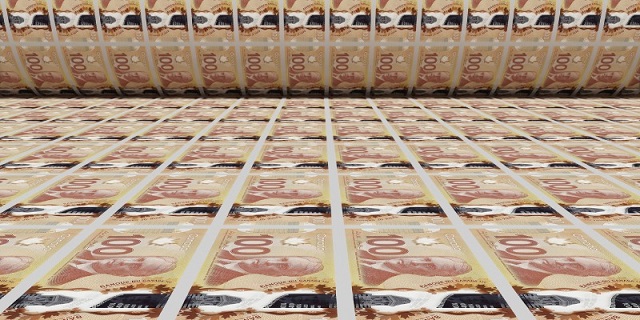
From the Frontier Centre for Public Policy
New script, same budget playbook. Nothing in the Carney budget breaks from the Trudeau years
Prime Minister Mark Carney’s first budget talks reform but delivers the same failed spending habits that defined the Trudeau years.
While speaking in the language of productivity, infrastructure and capital formation, the diction of grown-up economics, it still follows the same spending path that has driven federal budgets for years. The message sounds new, but the behaviour is unchanged.
Time will tell, to be fair, but it feels like more rhetoric, and we have seen this rhetoric lead to nothing before.
The government insists it has found a new path, one where public investment leads private growth. That sounds bold. However, it is more a rebranding than a reform. It is a shift in vocabulary, not in discipline. The government’s assumptions demand trust, not proof, and the budget offers little of the latter.
Former prime ministers Jean Chrétien and Paul Martin did not flirt with restraint; they executed it. Their budget cuts were deep, restored credibility, and revived Canada’s fiscal health when it was most needed. Ottawa shrank so the country could grow. Budget 2025 tries to invoke their spirit but not their actions. The contrast shows how far this budget falls short of real reform.
Former prime minister Stephen Harper, by contrast, treated balanced budgets as policy and principle. Even during the global financial crisis, his government used stimulus as a bridge, not a way of life. It cut taxes widely and consistently, limited public service growth and placed the long-term burden on restraint rather than rhetoric. Carney’s budget nods toward Harper’s focus on productivity and capital assets, yet it rejects the tax relief and spending controls that made his budgets coherent.
Then there is Justin Trudeau, the high tide of redistribution, vacuous identity politics and deficit-as-virtue posturing. Ottawa expanded into an ideological planner for everything, including housing, climate, childcare, inclusion portfolios and every new identity category.
The federal government’s latest budget is the first hint of retreat from that style. The identity program fireworks are dimmer, though they have not disappeared. The social policy boosterism is quieter. Perhaps fiscal gravity has begun to whisper in the prime minister’s ear.
However, one cannot confuse tone for transformation.
Spending still rises at a pace the government cannot justify. Deficits have grown. The new fiscal anchor, which measures only day-to-day spending and omits capital projects and interest costs, allows Ottawa to present a balanced budget while still adding to the deficit. The budget relies on the hopeful assumption that Ottawa’s capital spending will attract private investment on a scale economists politely describe as ambitious.
The housing file illustrates the contradiction. New funding for the construction of purpose-built rentals and a larger federal role in modular and subsidized housing builds announced in the budget is presented as a productivity measure, yet continues the Trudeau-era instinct to centralize housing policy rather than fix the levers that matter. Permitting delays, zoning rigidity, municipal approvals and labour shortages continue to slow actual construction. These barriers fall under provincial and municipal control, meaning federal spending cannot accelerate construction unless those governments change their rules. The example shows how federal spending avoids the real obstacles to growth.
Defence spending tells the same story. Budget 2025 offers incremental funding and some procurement gestures, but it avoids the core problem: Canada’s procurement system is broken. Delays stretch across decades. Projects become obsolete before contracts are signed. The system cannot buy a ship, an aircraft or an armoured vehicle without cost overruns and missed timelines. The money flows, but the forces do not get the equipment they need.
Most importantly, the structural problems remain untouched: no regulatory reform for major projects, no tax-competitiveness agenda and no strategy for shrinking a federal bureaucracy that has grown faster than the economy it governs. Ottawa presides over a low-productivity country but insists that a new accounting framework will solve what decades of overregulation and policy clutter have created. The budget avoids the hard decisions that make countries more productive.
From an Alberta vantage, the pivot is welcome but inadequate. The economy that pays for Confederation receives more rhetorical respect, yet the same regulatory thicket that blocks pipelines and mines remains intact. The government praises capital formation but still undermines the key sectors that generate it.
Budget 2025 tries to walk like Chrétien and talk like Harper while spending like Trudeau. That is not a transformation. It is a costume change. The country needed a budget that prioritized growth rooted in tangible assets and real productivity. What it got instead is a rhetorical turn without the courage to cut, streamline or reform.
Canada does not require a new budgeting vocabulary. It requires a government willing to govern in the country’s best interests.
Marco Navarro-Genie is vice-president of research at the Frontier Centre for Public Policy and co-author with Barry Cooper of Canada’s COVID: The Story of a Pandemic Moral Panic (2023).
Business
COP30 finally admits what resource workers already knew: prosperity and lower emissions must go hand in hand
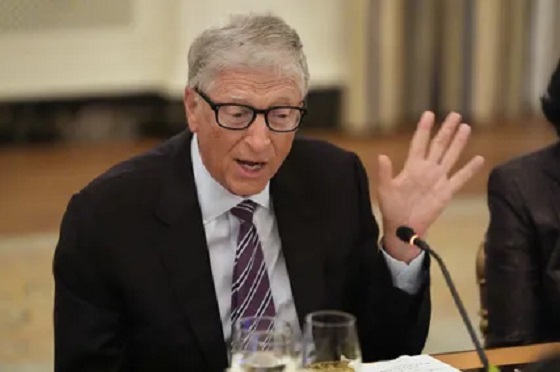
From Resource Works
What a difference a few weeks make
Finally, the Conference of the Parties to the UN climate convention (COP30) adopted a pragmatic tone that will appeal to the working class. Too bad it took thirty meetings. Pragmatism produces results, not missed targets.
We should not have been surprised. Influential figures like Bill Gates and Canadian-Venezuelan analyst Quico Toro, who have long argued that efforts to reduce CO₂ should focus more on technology and prosperity, and less on energy consumption and declining growth, have gained ground.
In the World Energy Outlook 2025, prepared by the International Energy Agency for COP30, you can see that many of the views held by the people above had already gone mainstream before the conference started.
The World Energy Outlook 2025 lays out three scenarios: Current Policies (CPS), Stated Policies (STEPS), and Net Zero Emissions by 2050 (NZE). In WEO 2025, all three scenarios reflect longer timelines for the decline of fossil fuels than in earlier editions, and the NZE pathway explicitly states that major technological breakthroughs will be required.
Unfortunately, many potential technologies are adamantly opposed by the loudest groups within the Climate Change Movement because they are not perfect. Even some continue to oppose nuclear power, one of the few proven sources of large-scale, zero-carbon, firm electricity.
Another noteworthy standout in WEO 2025 was the strong recognition that energy security, costs, and supply chains are now the primary considerations in determining each country’s energy mix.
What all this means is we are breaking away from emotionally charged, fear-based policies and rhetoric and moving toward a practical “let’s do things better” approach.
For 30 years, the radical leadership of the environmental movement has focused on what we should stop doing and on sacrificing prosperity. Essentially, what has been going on is an attack on working people in the industrialized and developing world.
Today, workers in the developed world are so anxious that many are losing faith in democratic institutions. Meanwhile, people in the emerging and developing world see light at the end of the tunnel and are determined to industrialize.
Clearly, it is time to merge the fight to lower CO₂ emissions with prosperity. “Let’s do things better” captures the history of human progress and resonates with working people today.
What does it take for longer, healthier, safer, and more sustainable lives? It takes the pragmatism of workers. They spend their lives striving to improve workplace safety, to develop tools that enable them to perform tasks more effectively with less physical effort, to earn higher pay, to produce more food with less land, and to preserve their opportunity to continue working.
Resource workers have felt under attack and are humiliated when celebrities fly in on a helicopter to denigrate their work and make references to the virtues of small-plot gardening, or politicians who tell them to go back to school for “jobs of the future”, only to find themselves in low-paying service jobs.
As the COP30 discussion indicates, we have reached a turning point. It is time to focus on doing what needs to be done, but doing it better. It is time to stop banning activities entirely as though circumstances and technology never change. Demanding perfection hides what is possible, slows progress and, in some cases, stops it altogether.
Bill Gates’ memo to COP30 points to the turn in the road:
“We should measure success by our impact on human welfare more than our impact on the global temperature, and our success relies on putting energy, health, and agriculture at the centre of our strategies.”
Gates also makes a point that will resonate with working people: “Using more energy is a good thing because it is closely correlated with economic growth.” Ironically, a statement made by a billionaire resonates with working people more than does the message of many climate activists.
The work at the Port of Prince Rupert comes to mind, given its growing role in supplying cleaner cooking and heating fuels, when we are reminded that 2 billion people worldwide cook and/or heat their homes with highly polluting open fires (wood, charcoal, dung, agricultural waste).
Persuasion published Quico Toro’s essay on November 13, 2025, which speaks another truth.
“COP imagines these emissions as something a country’s government can set, like the dial on a thermostat. But emissions are more like GDP: the outcome of a complex process that politicians would like to be able to control, but do not actually control.”
I am feeling more secure about the future here in Canada and BC, as governments, First Nations and the public are leaning into climate and economic pragmatism.
There will be hard discussions and uncomfortable trade-offs. Past decisions need to be re-examined in good faith. Do they meet today’s demands? Are we doing what needs to be done better? Is it the right move for today’s youth and future generations? Will we bring back the hope and opportunity of a growing middle class?
Nobody, not the Liberal government, the BC NDP government, First Nations, none of us would have predicted the world we are facing today, where our economy and sovereignty are challenged.
Today, oil, natural gas, and critical minerals, not one or two but all three, are the financial backstop Canada needs, as we rebuild the economy and secure our sovereignty.
Look West: Jobs and Prosperity for Stronger BC and Canada is as much of an admission that we are falling behind as it is a call to action. Success will take billions of dollars, the exact amount unknown.
But what we do know is that oil, gas, and critical minerals generate the most public revenue, the highest incomes, and are our most significant exports. They are Canada’s bank and comparative advantage. They will provide the cash flow needed to get it done.
Not maximizing oil production and exports is fighting with both hands tied behind our back. We all know it; now we need to focus on doing it better because circumstances have changed dramatically.
Jim Rushton is a 46-year veteran of BC’s resource and transportation sectors, with experience in union representation, economic development, and terminal management.
Resource Works News
-

 Digital ID2 days ago
Digital ID2 days agoCanada releases new digital ID app for personal documents despite privacy concerns
-
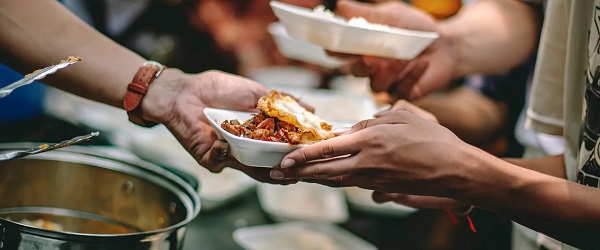
 Community1 day ago
Community1 day agoCharitable giving on the decline in Canada
-
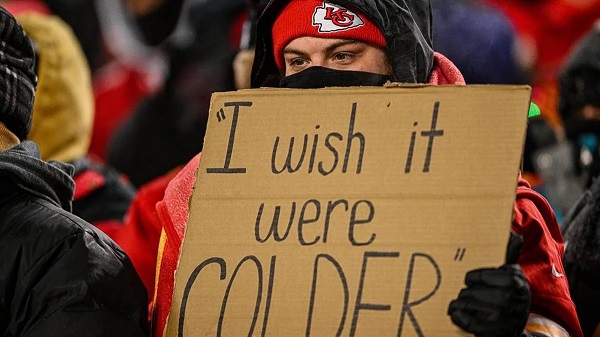
 Bruce Dowbiggin2 days ago
Bruce Dowbiggin2 days agoNFL Ice Bowls Turn Down The Thermostat on Climate Change Hysteria
-

 Energy2 days ago
Energy2 days agoCanada’s sudden rediscovery of energy ambition has been greeted with a familiar charge: hypocrisy
-
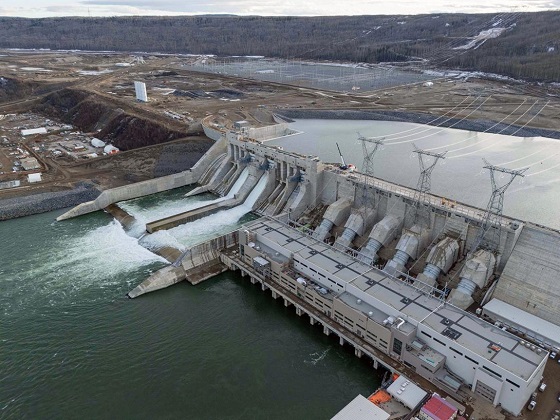
 Energy2 days ago
Energy2 days agoCan we not be hysterical about AI and energy usage?
-

 Crime2 days ago
Crime2 days agoTrump designates fentanyl a ‘weapon of mass destruction’
-

 Energy2 days ago
Energy2 days agoEnergy security matters more than political rhetoric
-

 Alberta1 day ago
Alberta1 day agoCanada’s New Green Deal





